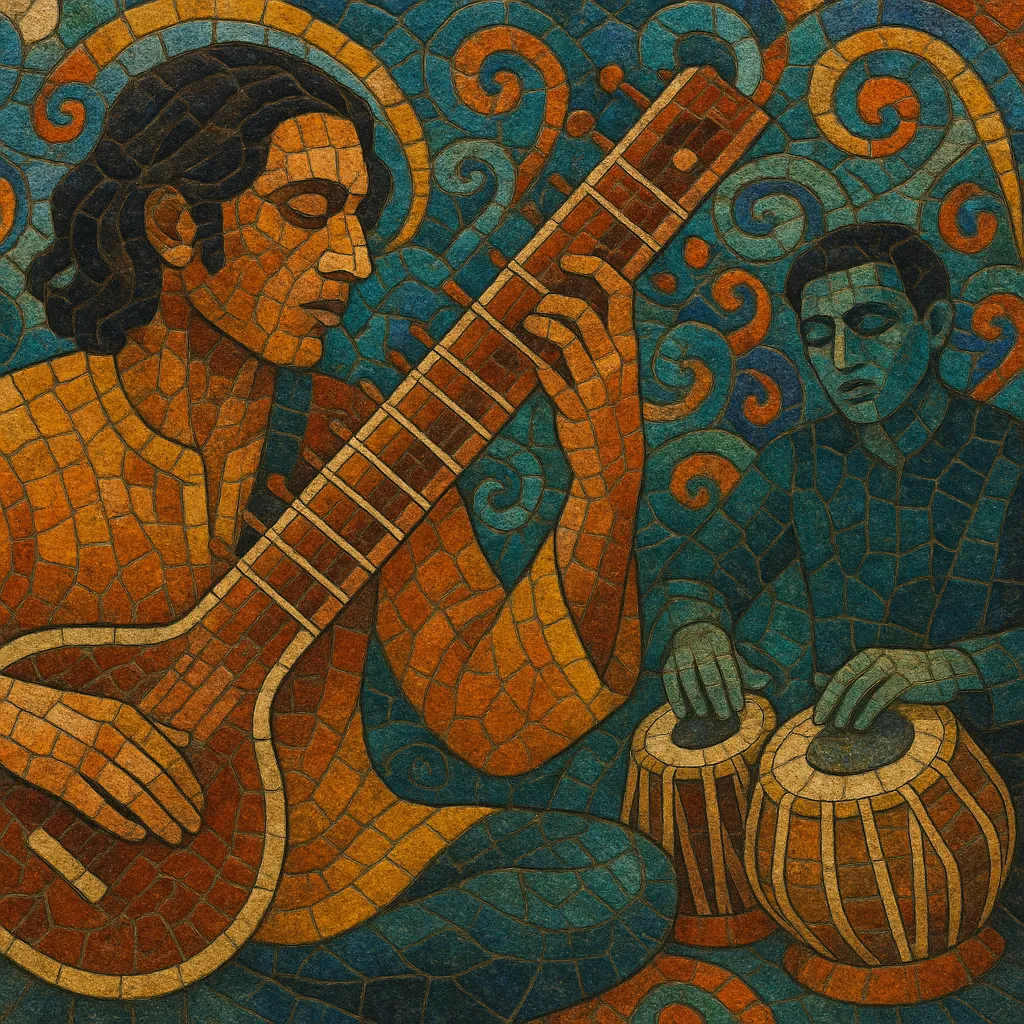Raga rock is a 1960s-born fusion of Western rock and Indian classical concepts, characterized by sustained drones, modal (non-chordal) harmony, sitar- or sitar-like guitar timbres, and cyclical rhythmic patterns. The style seeks a hypnotic, transcendental feel by borrowing the raga’s emphasis on a single tonal center and ornamental melodic movement rather than functional chord progressions.
Signature features include tambura (tanpura) or tambura-like drones, sitar or sitar-emulating electric guitar lines with bends and slides (meend), tabla-inspired grooves alongside a rock backbeat, and psychedelic studio techniques such as tape loops, reverse guitar, and phasing. Lyrically, songs often reference mysticism, meditation, and inner travel, aligning with 1960s countercultural and psychedelic sensibilities.
Raga rock emerged in the mid-1960s United Kingdom as British rock musicians began integrating Indian classical music into rock and pop. Early catalysts included The Kinks’ "See My Friends" (1965) with its drone textures and The Yardbirds’ "Heart Full of Soul" (1965), first attempted with sitar, then rendered on electric guitar with raga-like phrasing. The Beatles popularized the sound internationally: "Norwegian Wood (This Bird Has Flown)" (1965) introduced sitar to a mass rock audience, followed by "Love You To" (1966), "Tomorrow Never Knows" (1966, with tambura drone and tape loops), and "Within You Without You" (1967). Concurrently, The Byrds’ "Eight Miles High" (1966) fused raga-like drones and improvisatory logic with jazz impulses, while The Rolling Stones’ "Paint It Black" (1966) deployed sitar over a driving rock rhythm.
Between 1966 and 1968, raga rock became a key color in the broader psychedelic palette. Ravi Shankar’s influence on George Harrison deepened the adoption of sitar, tambura, tabla, and raga-informed melody in Western pop contexts, and many artists explored Indian timbres and modal vamps to evoke trance and spiritual searching. Labels and studios embraced psychedelic production—reverse tapes, ADT, phasing, and varispeed—to heighten the hypnotic atmosphere central to raga-inflected songs.
By the late 1960s, overt Indian instrumentation in mainstream rock waned, but raga rock’s modal drones and extended, non-functional approaches left a lasting imprint. Its aesthetics fed into psychedelic rock and pop, later shaping neo-psychedelia and dream pop’s sustained textures. From the 1990s onward, revivalists like Kula Shaker renewed raga references in Britpop-era contexts, while collaborative and world-fusion practices increasingly involved Indian musicians directly, reflecting a conscious shift from exoticism toward exchange. The style’s legacy persists in contemporary rock’s fascination with drones, cyclical grooves, and trance-inducing timbres.


